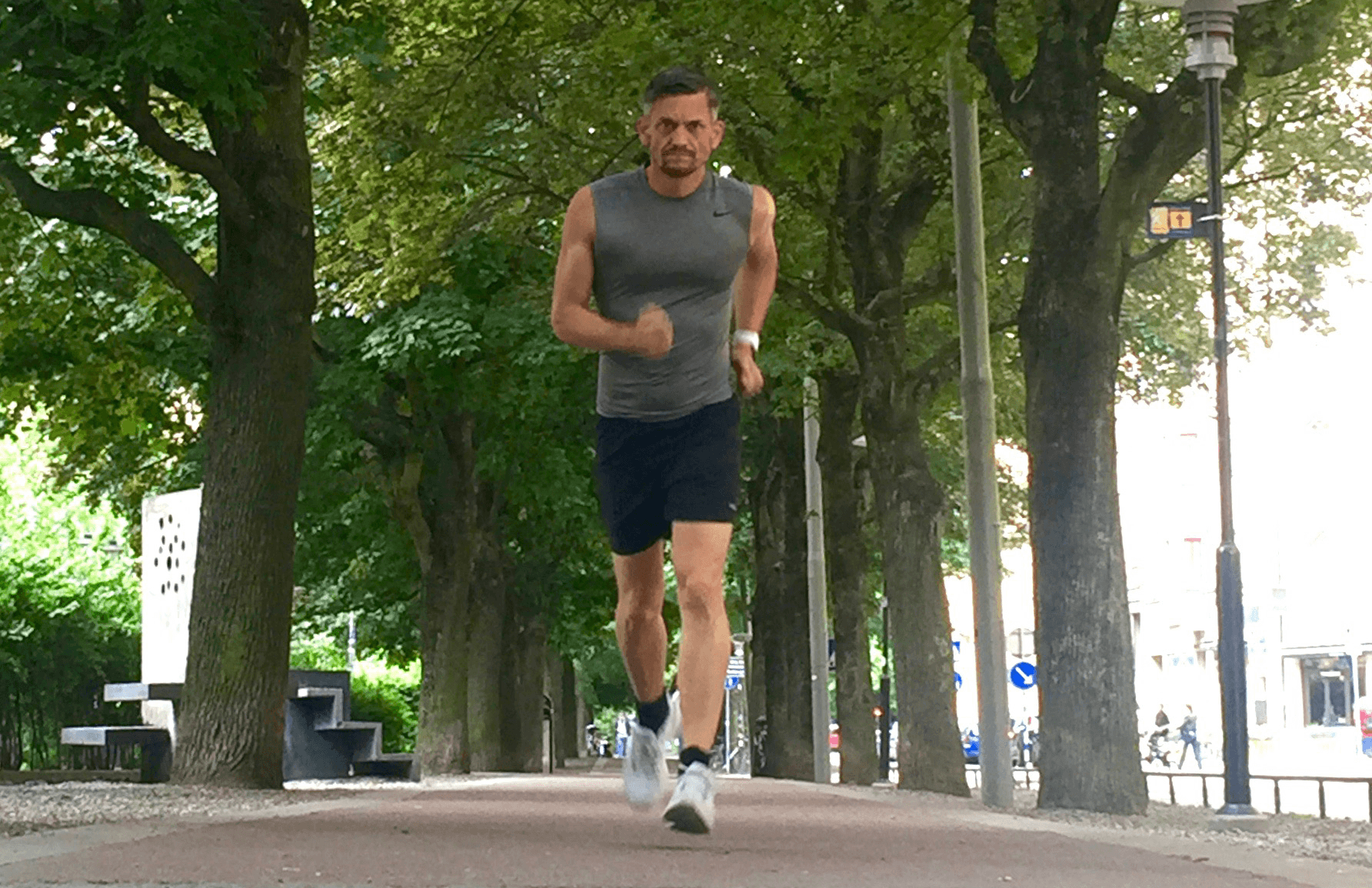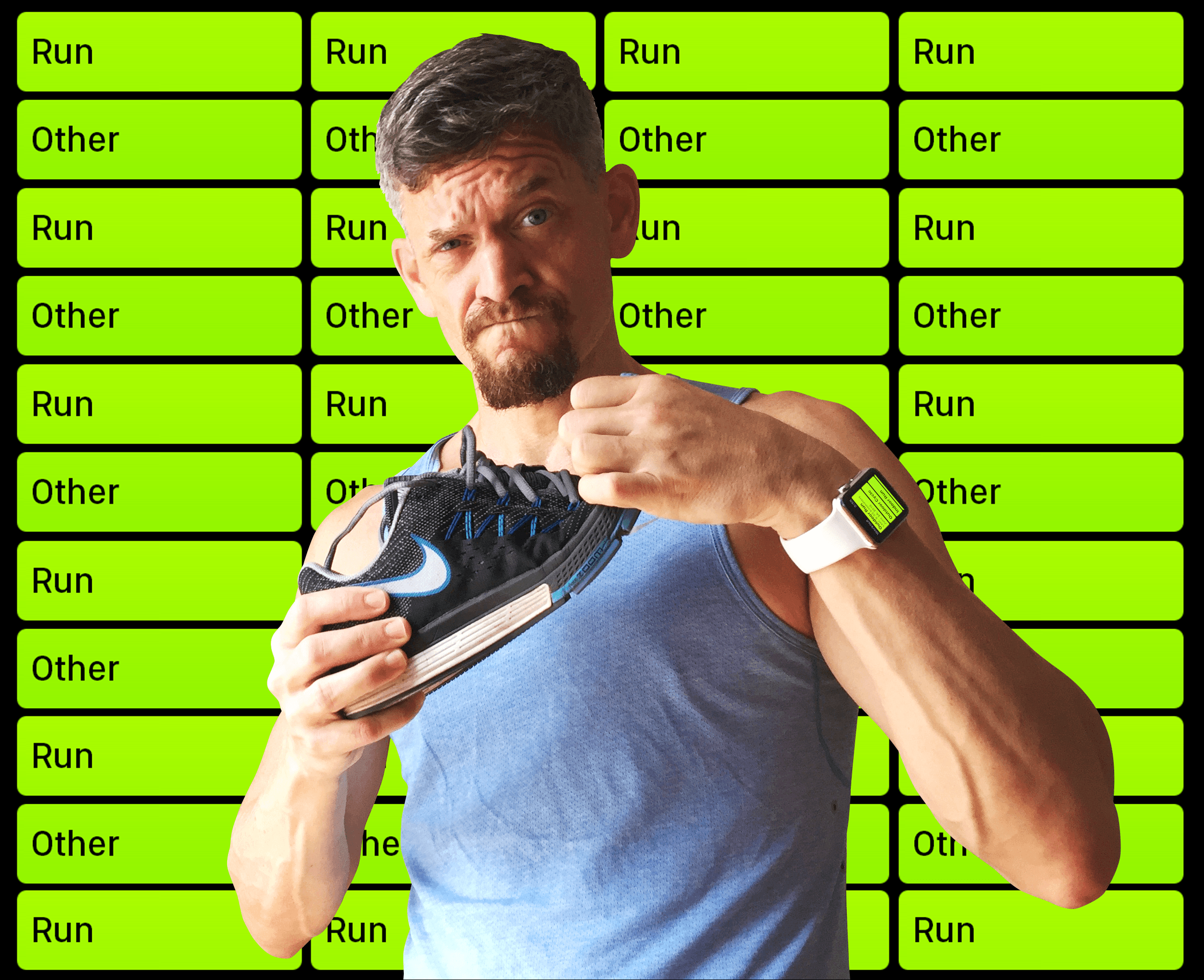Millions of people go running with their iPhone or Apple Watch every day. Logging runs is one of the main features of just about every fitness gadget on the market.
So should you join the sweaty masses and start using a running app? Not so fast. Not everyone is suited to running, and it won’t develop all aspects of your fitness. Plus, there are loads of other kinds of exercise you could be doing instead. What makes running so special?
This post contains affiliate links. Cult of Mac may earn a commission when you use our links to buy items.
Choose any exercise, as long as it is running
In the famous Monty Python Spam sketch, a waitress informs her customers that they can choose anything on the menu as long as it is Spam. Similarly, most fitness gadgets these days seem to only have one activity on the menu: running.
The Health & Fitness category of the App Store is crammed full of running apps. It’s at the top of the list in the Apple Watch Workout app, and it’s pretty much the only activity you can do with Nike+.
There are two reasons for this: supply and demand.
Running apps: supply and demand
On the supply side, running apps are quick and easy for developers to build, thanks to GPS and Apple Maps. Developing apps for other kinds of exercise activity is not as easy, because iPhone and Apple Watch lack the necessary sensors.
Demand for running apps is also a big driver. Running is one of America’s most popular fitness activities, with more than 60 million Americans having gone for a jog or run in the past 12 months.
Aerobic versus anaerobic exercise: Which is best?
While running remains very popular, the number of people engaging in this type of exercise has declined slightly in recent years. One reason is new fitness trends, like CrossFit, that question the benefits of traditional aerobic workouts, arguing that anaerobic exercise is more effective.
Aerobic exercises, like running, are performed at a moderate intensity over a sustained period of time, with your muscles fueled primarily by oxygen that you breath in during your workout. This kind of exercise improves your cardiovascular fitness, which can help to reduce your risk of heart disease.
Anaerobic exercise is where you muscles are powered primarily by energy already stored within your body, without much help from the oxygen you breath during your workout. This kind of exercise involves short, intense bursts of exertion, like when you lift weights.
While CrossFit experts recognize the cardiovascular and fat-burning benefits of aerobic fitness, they argue that anaerobic exercise also helps with these, while offering other benefits such as increased strength and muscle mass. CrossFit advocates also claim that too much aerobic exercise can result in a loss of muscle mass.
But there are also those, like fitness writer Christopher McDougall, who claim that we are “born to run,” arguing that we have evolved to become excellent endurance runners. So who is right?
They both are. It is true that some athletes, like bodybuilders who are bulking up, might choose to eliminate aerobic exercise entirely from their training. But if you are just aiming to improve your overall fitness, it is a good idea to combine both aerobic and anaerobic exercise in your workouts.
Running is a good place to start

Photo: Graham Bower/Cult of Mac
Running is probably the most popular form of aerobic exercise because you don’t need any special equipment to do it. Just a pair of running shoes, a sidewalk and of course your Apple Watch. But there are plenty of other aerobic options to choose from. Apple Watch includes Walking, Elliptical, Rower and Stair Stepper workouts, which are also aerobic exercises.
Like all aerobic exercise, running improves your cardiovascular fitness. It also improves your VO2 max, which means you won’t get out of breath so easily. Plus, the impact of pounding the asphalt simulates an increase in your bone density, which can help to keep them strong. (NB: The high impact of running also brings health risks, especially if you have problems with your joints or bones, so check with your physician before you take up running.)
These are all important health benefits, but perhaps the most popular reason people take up running is to help lose weight.
Running to lose weight
Most experts agree that weight loss is all about “calories in” and “calories out.” To lose weight, you must have fewer calories going in (from the food you eat) than going out (energy you “burn” during each day’s activity). So to shed those unwanted pounds, you must either reduce what you eat or increase your activity. In most cases, you will benefit from doing a combination of both.
Running is a good way of increasing the energy you burn. Running slowly, where your heart rate is lower than 70 percent of its maximum, is known as training in the “fat-burning zone.” If you do this regularly for 40 minutes or more, your body becomes better at burning body fat as a source of energy. You can use the heart rate monitor built into your Apple Watch to help you find your fat-burning zone. (I’ve written more about heart-rate training with Apple Watch.)
Some people now argue that the fat-burning zone is a myth. They say running faster (higher-intensity exercise) will result in burning more calories and will therefore help you lose more weight. High intensity interval training, or HIIT, where several short bursts of fast running are broken up with brief rest intervals, is one popular example of this.
It is true that five minutes of intense exercise will burn more calories than five minutes of light exercise. The trouble is that most people struggle to do more than five minutes of intense exercise without becoming exhausted, whereas light exercise can be comfortably and enjoyably sustained for much longer. An hour of slow jogging in the fat-burning zone will burn more calories than a short burst of intense exercise, and you probably won’t feel so exhausted afterward.
Running: Do it because you love it
Ultimately, whether you decide to run or not, and how intensely you choose to do it, is all about personal preference. Don’t go running just because the gadget makers are obsessed with it, or because it is what everyone else seems to be doing.
If you hate aerobic exercise, then don’t do it. Seriously. Try some other activity instead.
Doing something is always better than doing nothing, and if you try to force yourself to do something you hate, then you will probably not stick to it for very long.
Even if you love running, it is important to remember that you need to include anaerobic training as well as aerobic training for all-around fitness. Running alone is not enough — you should include some strength training in your workouts as well.
Personally, I think running is something that should be savored, like a fine wine. Don’t go at it hard and fast, exhausting yourself and feeling terrible in the process. And don’t bore yourself senseless, getting sweaty on the treadmill while watching CNN.
Find somewhere beautiful, go for a leisurely run, get some fresh air and enjoy the scenery. That way, you might actually enjoy it and it can become a regular habit.


